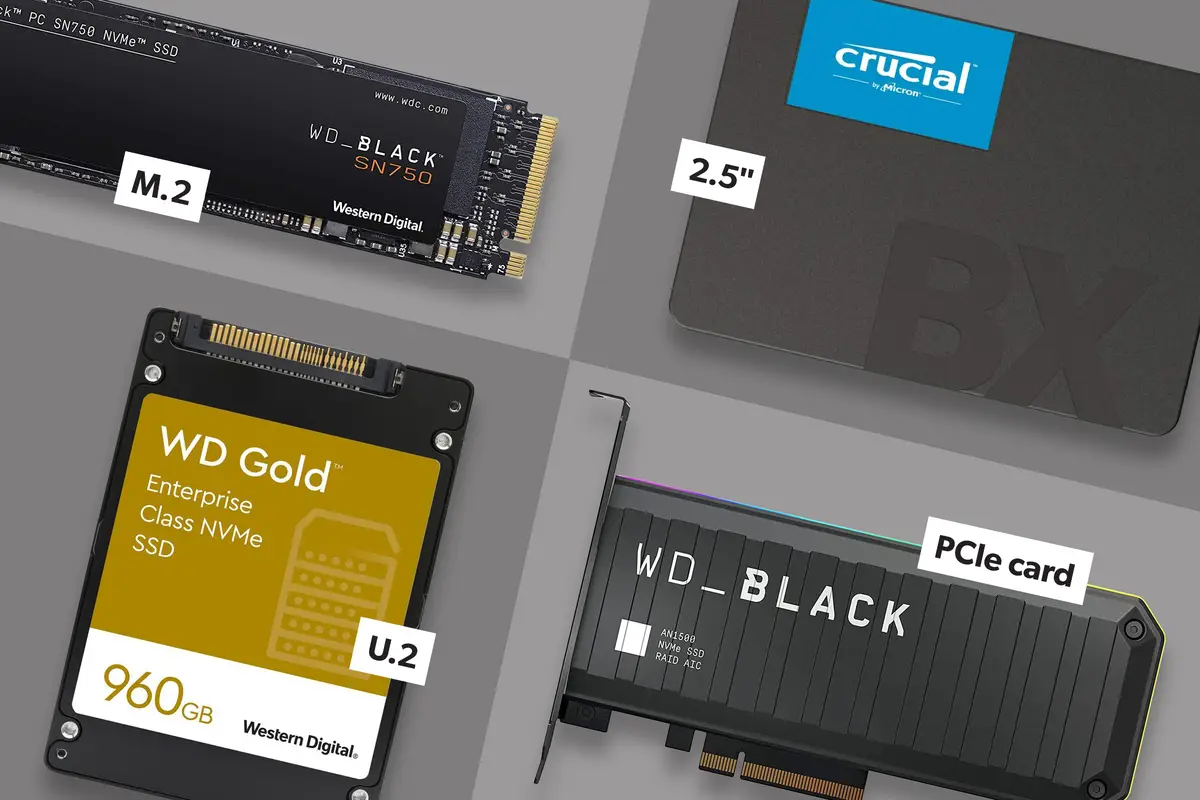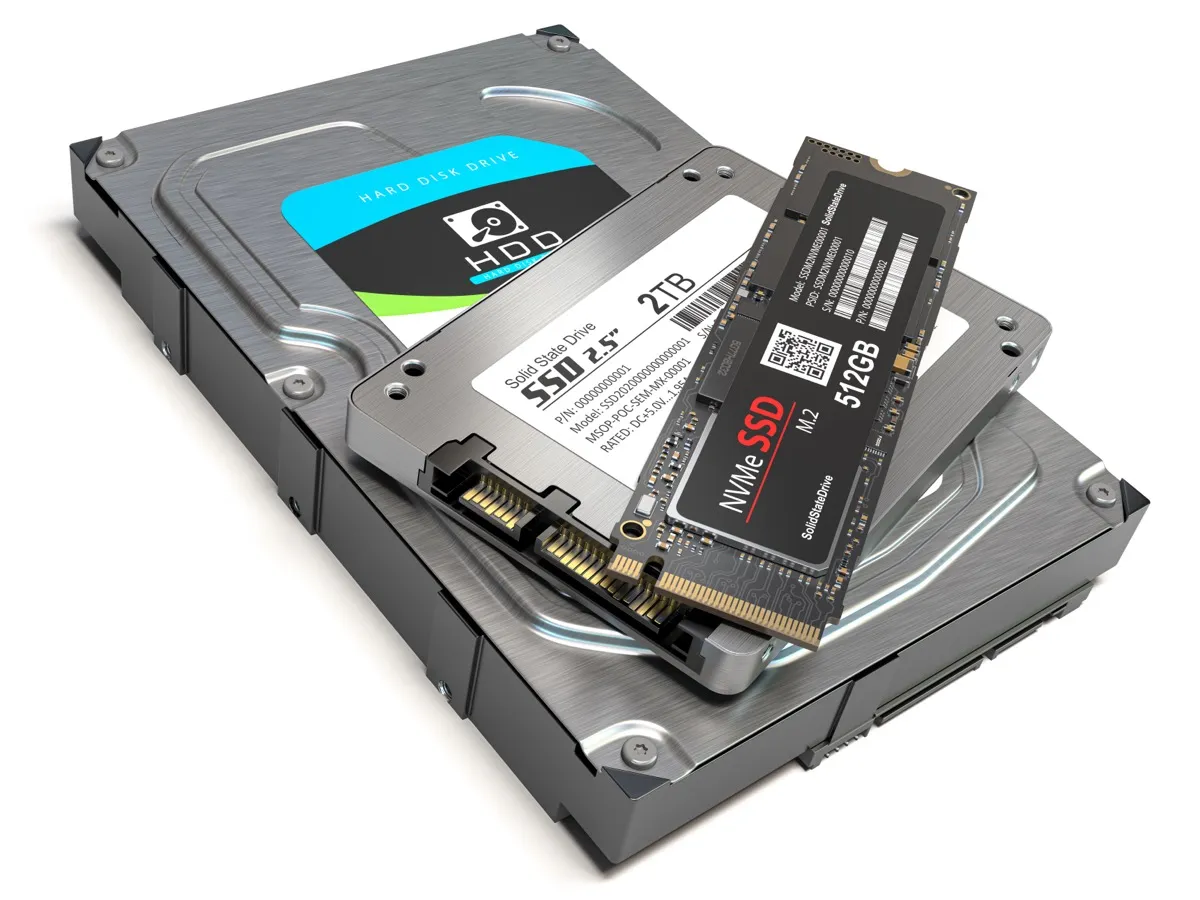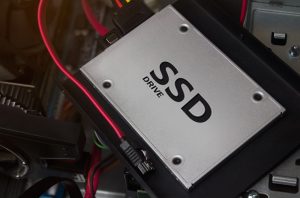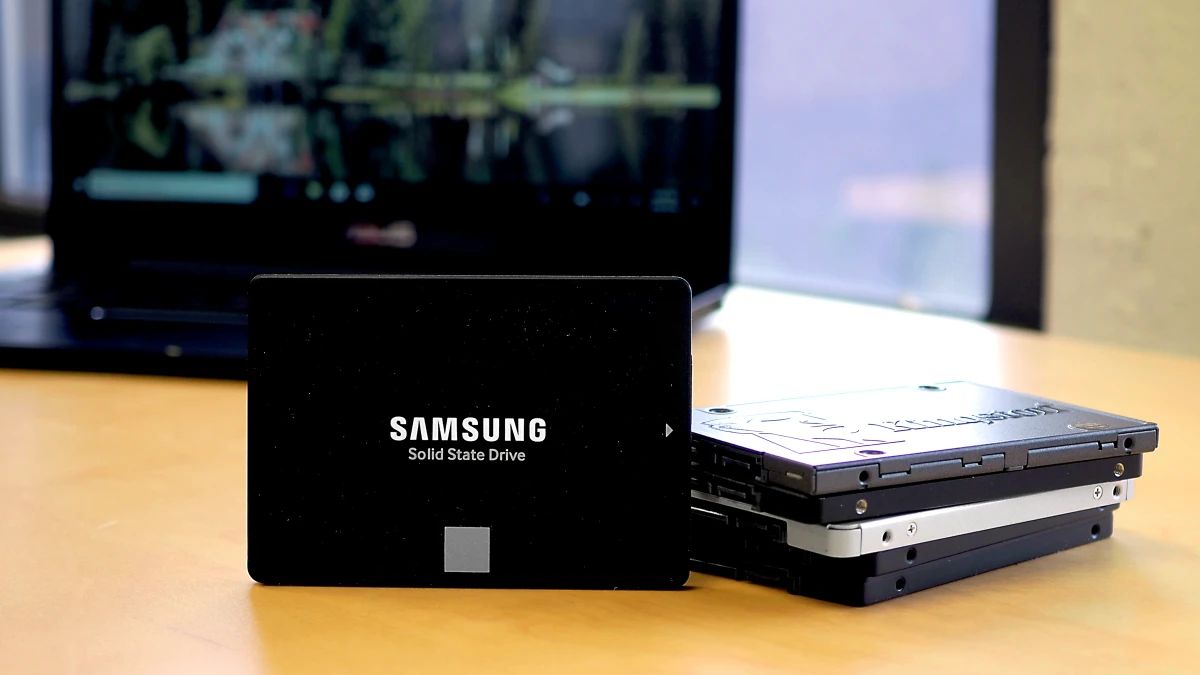Introduction
Welcome to the world of solid-state drives (SSDs), where speed, performance, and storage efficiency reign supreme. If you’re reading this article, chances are you already have an SSD or are planning to get one. But do you know what kind of SSD you have? In this guide, we’ll explore the importance of knowing your SSD model and take you through the various methods of identifying it.
Understanding the specific model and type of your SSD can provide valuable insights into its capabilities and compatibility with your system. Different SSD models have different performance levels, storage capacities, and interfaces, which can impact your overall computing experience. Whether you’re looking to upgrade, troubleshoot, or simply satisfy your curiosity, knowing your SSD model is the first step.
In this guide, we’ll cover the different ways to check your SSD model on Windows, Mac, and Linux operating systems. We’ll also explore how to use command prompt or terminal commands to identify your SSD model. Additionally, we’ll delve into the different types of SSDs available in the market and provide an overview of some common SSD brands and models to look out for. Lastly, we’ll touch upon troubleshooting common SSD detection issues that you may encounter.
By the end of this guide, you’ll have the knowledge and tools necessary to confidently identify your SSD model and make informed decisions regarding your storage needs. So, let’s dive in and unlock the mystery behind your SSD!
Why it’s important to know what kind of SSD you have
Knowing the specific model and type of your solid-state drive (SSD) is crucial for several reasons. Let’s explore why it’s important to have this information:
- Compatibility: Different SSD models have varying interfaces and form factors. By knowing your SSD model, you can ensure compatibility with your computer or device. This knowledge prevents purchasing an incompatible SSD and saves you from the hassle of returning or exchanging it.
- Performance: SSDs come in different performance levels, and knowing your SSD model allows you to assess its speed and capabilities. By understanding the specifications of your SSD, such as read and write speeds, you can optimize your system’s performance and ensure that it meets your specific needs, whether it’s for gaming, multimedia editing, or day-to-day computing tasks.
- Upgrade Considerations: If you’re planning to upgrade your SSD, knowing the current model helps you make an informed decision. Upgrading to a higher-performance SSD with a larger storage capacity can significantly improve your system’s speed and storage capabilities.
- Troubleshooting: In case you encounter any issues with your SSD, having the model information can aid in troubleshooting. It allows you to search for specific firmware updates, driver compatibility, and known issues related to your SSD model. This knowledge can save you valuable time and help you find effective solutions more efficiently.
- Warranty and Support: SSD manufacturers typically provide product support and warranty services based on the specific model. By knowing your SSD model, you can easily access documentation, contact support, or initiate warranty claims, if necessary.
Overall, having knowledge of your SSD model is essential for ensuring compatibility, maximizing performance, making informed purchasing decisions, troubleshooting effectively, and accessing necessary support. Armed with this information, you can confidently navigate the world of solid-state drives and harness their full potential.
Checking your SSD model on Windows
If you’re using a Windows operating system, there are several methods you can use to check the model of your solid-state drive (SSD). Here are a few options:
- Device Manager: Open the Device Manager by right-clicking on the Start button and selecting “Device Manager” from the menu. In the Device Manager window, expand the “Disk drives” category. You should see your SSD listed here, typically with the brand name and model number.
- System Information utility: Press the Windows key + R to open the Run dialog box, then type “msinfo32” and hit Enter. The System Information utility will open, displaying detailed information about your computer. Navigate to “Components” > “Storage” > “Disks” to find your SSD model.
- Third-party software: There are several third-party software tools available that can provide detailed information about your hardware, including your SSD model. Some popular options include CrystalDiskInfo, Speccy, and HWiNFO. Download and install one of these tools, then launch it to find your SSD model.
- Manufacturer’s software: SSD manufacturers often provide software utilities specifically designed to monitor and manage their SSDs. These utilities typically offer information about your SSD model, as well as additional features for optimizing performance and updating firmware. Check the manufacturer’s website for any available software for your SSD model.
By utilizing one of these methods, you can easily identify the model of your SSD on a Windows system. Make a note of the model number for future reference or troubleshooting purposes.
Checking your SSD model on Mac
If you’re using a Mac computer, you can find the model information for your solid-state drive (SSD) using the following steps:
- About This Mac: Click on the Apple menu in the top-left corner of the screen and select “About This Mac.” In the Overview tab, click on the “System Report” button. This will launch the System Information utility.
- System Information: In the System Information window, navigate to “Hardware” in the sidebar and then select “Storage” under the Hardware section. You will see detailed information about your SSD, including the model name and capacity.
- Disk Utility: Another way to check your SSD model on a Mac is by using the Disk Utility application. Open Finder, click on “Applications” in the sidebar, then go to the “Utilities” folder and open Disk Utility. Your SSD will be listed on the left side of the Disk Utility window. Click on it, and the model information will be displayed in the middle of the window.
- Terminal: If you prefer using the terminal, you can open it by going to “Applications” > “Utilities” > “Terminal.” Type the following command and press Enter:
diskutil info disk0 | grep "Device Identifier". This command will display the device identifier, which includes the model information of your SSD.
By following these steps, you should be able to easily identify the model of your SSD on a Mac system. Take note of the model name for future reference or troubleshooting purposes.
Checking your SSD model on Linux
If you’re using a Linux-based operating system, there are a few methods you can use to check the model of your solid-state drive (SSD). Here are a couple of options:
- lshw: Open the terminal and type the command
sudo lshw -class storage -short. This will display a detailed list of storage devices connected to your Linux system, including your SSD. Look for the line containing your SSD’s model information. - lsblk: Another way to check your SSD model on Linux is by using the
lsblkcommand. Open the terminal and type the commandlsblk -o NAME,MODEL. This will provide a list of storage devices and their corresponding models. Locate your SSD in the output. - GNOME Disks: If you’re using the GNOME desktop environment, you can use the built-in GNOME Disks utility to check your SSD model. Open the “Activities” menu, search for “Disks,” and open the GNOME Disks application. In the left sidebar, select your SSD from the list of devices. The model information will be displayed in the main window.
These methods should help you identify the model of your SSD on a Linux system. Make note of the model number for future reference or troubleshooting, if needed.
Checking your SSD model using command prompt or terminal
If you prefer using the command prompt or terminal, you can check the model of your solid-state drive (SSD) using specific commands. Here are a few options:
- Windows Command Prompt: Open the command prompt by searching for “Command Prompt” in the Start menu or by pressing Windows key + R, typing “cmd,” and hitting Enter. In the command prompt, type
wmic diskdrive get modeland press Enter. This command will display the model name of your SSD. - Linux Terminal: Open the terminal and type the command
sudo hdparm -I /dev/sda | grep Model. Replace “/dev/sda” with the appropriate device identifier for your SSD. This will display the model information of your SSD. - macOS Terminal: Open the terminal by going to “Applications” > “Utilities” > “Terminal.” Type the command
system_profiler SPNVMeDataType | grep "Device Model"and press Enter. The terminal will display the model name of your NVMe SSD.
By using these command prompt or terminal commands, you can quickly find the model information of your SSD. Remember to note down the model name for future reference or troubleshooting purposes.
Understanding different types of SSDs
When it comes to solid-state drives (SSDs), there are various types available in the market. Understanding their differences can help you make an informed decision when choosing an SSD for your specific needs. Here are some of the most common types of SSDs:
- SATA SSDs: SATA (Serial ATA) SSDs are the most widely used type. They connect to the computer’s motherboard using the SATA interface, which has been the standard for hard drives and SSDs for many years. SATA SSDs offer faster performance compared to traditional hard drives, but they are limited by the maximum speed of the SATA interface.
- PCIe SSDs: PCIe (Peripheral Component Interconnect Express) SSDs are a newer and faster type of SSD. They connect directly to the computer’s PCIe slot, bypassing the limitations of the SATA interface. PCIe SSDs use a faster and more efficient protocol for data transfer, enabling significantly higher speeds and lower latency compared to SATA SSDs.
- M.2 SSDs: M.2 SSDs are a form factor that can use either the SATA or PCIe interface. They are small, lightweight, and designed primarily for laptops and ultrabooks. M.2 SSDs come in different lengths and widths, denoted by various keying options (such as B key, M key, or B+M key), which determine their compatibility and supported interface.
- NVMe SSDs: NVMe (Non-Volatile Memory Express) SSDs are a type of PCIe SSD that utilizes the NVMe protocol for communication. NVMe SSDs offer significantly faster speeds and lower latency compared to both SATA and traditional PCIe SSDs. They are ideal for high-performance computing tasks, such as gaming, video editing, and data-intensive applications.
- Enterprise SSDs: Enterprise SSDs are designed for mission-critical applications and data centers. They offer higher endurance and reliability than consumer-grade SSDs, along with advanced features like power loss protection, cryptographic capabilities, and enhanced error correction algorithms.
Each type of SSD has its own advantages and considerations. SATA SSDs are cost-effective and widely compatible, while PCIe and NVMe SSDs offer higher speeds for demanding workloads. M.2 SSDs are compact and ideal for constrained spaces, while enterprise SSDs cater to specific enterprise-level requirements.
When choosing an SSD, consider your specific needs, such as performance requirements, available interface options on your system, form factor compatibility, and budget. Understanding the different types of SSDs will help you make an informed decision and select an SSD that best suits your requirements.
Common SSD brands and models
When it comes to choosing a solid-state drive (SSD), there are several reputable brands that offer high-performance and reliable options. Here are some of the common SSD brands and models worth considering:
- Samsung: Samsung is a leading player in the SSD market, offering a range of models and capacities. Their popular SSDs include the Samsung 860 EVO and Samsung 970 EVO Plus, known for their excellent performance, reliability, and longevity.
- Crucial: Crucial, a brand owned by Micron Technology, produces reliable and affordable SSDs. The Crucial MX500 and Crucial P5 are popular models that deliver respectable performance at competitive prices.
- Western Digital: Western Digital, known for their hard drives, also offers a range of SSDs. The WD Blue and WD Black series are widely recognized for their reliability and solid performance, making them a popular choice among consumers.
- Kingston: Kingston is a reputable brand that offers a variety of SSD options. Their Kingston A2000 and Kingston KC2500 SSDs are well-regarded for their fast speeds and reliable performance, making them a viable choice for both consumer and professional use.
- ADATA: ADATA is known for providing affordable SSDs without compromising on quality. Models like the ADATA SU800 and ADATA XPG SX8200 Pro offer good performance and a good balance of cost-effectiveness.
- SanDisk: A brand under Western Digital, SanDisk offers reliable SSDs with good value for money. The SanDisk SSD Plus and SanDisk Extreme PRO are well-regarded for their performance and durability.
Keep in mind that the SSD market is continually evolving, and new models are regularly introduced. It’s always a good idea to research and read reviews before making a purchase to ensure you’re getting the best SSD for your needs. Additionally, consider factors such as storage capacity, warranty, and customer support when evaluating different brands and models.
Ultimately, the choice of SSD brand and model depends on your specific requirements, budget, and preferences. By considering the reputation, performance, and features of different brands and models, you’ll be able to make an informed decision and select an SSD that meets your needs for speed, reliability, and storage capacity.
Troubleshooting common SSD detection issues
While solid-state drives (SSDs) are generally reliable and efficient, there may be instances where you encounter detection issues. Here are some common troubleshooting steps to help diagnose and resolve SSD detection problems:
- Check physical connections: Ensure that the SATA or PCIe cables connecting your SSD to the motherboard or expansion card are securely plugged in. Sometimes, loose or faulty connections can result in detection issues.
- Try a different cable and port: Swap out the SATA or PCIe cable with a known working one. Similarly, connect your SSD to a different SATA or PCIe slot to rule out any issues with the original cable or port.
- Update drivers and firmware: Visit the manufacturer’s website and check for any available driver or firmware updates for your SSD model. Outdated drivers or firmware can cause compatibility issues and may prevent proper detection.
- Check BIOS or UEFI settings: Access your computer’s BIOS or UEFI settings and ensure that the SATA or PCIe interface is enabled. Additionally, check if the SSD is set as the boot device if you’re having trouble booting from it.
- Verify compatibility: Confirm that your SSD is compatible with your system’s interface (SATA or PCIe) and that it meets the required specifications of your motherboard or expansion card.
- Test on a different system: If possible, connect your SSD to a different computer and see if it is detected. This can help identify whether the issue lies with the SSD itself or with your specific system configuration.
- Perform a power cycle: Shut down your computer, disconnect the power cable, and hold down the power button for 10-15 seconds to discharge any residual power. Reconnect the power cable, start the computer, and check if the SSD is detected.
- Reset the BIOS or UEFI settings: Resetting the BIOS or UEFI settings to their default values can sometimes resolve detection issues. Refer to your motherboard or computer manual for instructions on resetting the settings.
- Contact manufacturer support: If all else fails, reach out to the manufacturer’s support team for further assistance. They can provide specific advice and troubleshooting steps tailored to your SSD model.
By following these troubleshooting steps, you can often resolve common SSD detection issues. However, if the problem persists, it may indicate a hardware or firmware problem with the SSD itself, and you may need to consider seeking professional help or contacting the manufacturer for warranty support.
Conclusion
Knowing the model and type of your solid-state drive (SSD) is crucial for compatibility, performance optimization, troubleshooting, and making informed purchasing decisions. In this guide, we explored various methods to check your SSD model on Windows, Mac, and Linux operating systems. We also discussed how to use command prompt or terminal commands to identify your SSD model.
Additionally, we delved into different types of SSDs, including SATA, PCIe, M.2, and NVMe SSDs, each with its own advantages and considerations. We also highlighted some common SSD brands and models, such as Samsung, Crucial, Western Digital, Kingston, ADATA, and SanDisk.
If you encounter any detection issues with your SSD, we provided troubleshooting steps to help address them. Checking physical connections, updating drivers and firmware, verifying compatibility, and exploring BIOS or UEFI settings are some key actions to take when troubleshooting.
Remember to research and read reviews to find the best SSD for your specific needs, considering factors such as performance, storage capacity, warranty, and customer support. Regularly check for firmware updates and take care to keep your SSD in optimal condition.
By understanding your SSD model and type, you can ensure compatibility, optimize performance, and troubleshoot any potential issues. Whether you’re a gamer, professional, or everyday computer user, having a solid understanding of your SSD will contribute to a smooth and efficient computing experience.

























